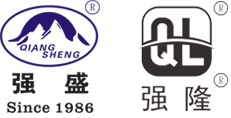Tongxiang Qianglong Machinery Co., Ltd. is high-tech China wholesale computerized flat knitting machine manufacturers, specialized in designing, developing, and manufacturing Knitting Machinery..
Computerized knitting machine is a sophisticated piece of equipment used to create knitted fabrics and garments with precision and efficiency. Here's an overview of how a computerized knitting machine works and its main components:
Knitting Bed: The knitting bed is the main structure of the machine where the knitting process takes place. It consists of needle beds with multiple needles arranged in a specific pattern and configuration. The needles move up and down to form stitches and create the desired fabric.
Needle Selection Mechanism: Computerized knitting machines have an intricate needle selection mechanism controlled by a computer. This mechanism determines which needles are activated during each knitting cycle, allowing for the creation of intricate patterns, textures, and designs.
Yarn Feeding System: Computerized knitting machines feature automated yarn feeding systems that deliver yarn to the needles as needed during the knitting process. The yarn is typically supplied from cones or spools and passes through tensioning devices to ensure consistent tension and smooth feeding.
Control Panel and Computer Interface: Computerized knitting machines are equipped with a control panel and computer interface that allow operators to input and adjust various parameters such as stitch patterns, stitch density, and knitting speed. The computerized control system coordinates the movement of needles and yarn feeders to produce the desired fabric.
Sensor Systems: Modern computerized knitting machines may incorporate sensor systems to monitor and control various aspects of the knitting process, such as yarn tension, fabric tension, and stitch quality. These sensors help ensure consistent fabric quality and reduce the risk of defects or errors.

Pattern Storage and Programming: Computerized knitting machines have the capability to store and retrieve multiple knitting patterns and designs. Operators can program the machine to knit different patterns, textures, and color combinations without the need for manual adjustments between runs.
Mechanical Drive Systems: Computerized knitting machines are powered by mechanical drive systems, including motors, gears, and belts, that control the movement of needles, yarn feeders, and other components. These drive systems ensure precise and synchronized operation of the machine during the knitting process.
Auxiliary Equipment: Depending on the specific application and configuration, computerized knitting machines may be equipped with auxiliary equipment such as fabric take-up rollers, fabric inspection systems, and fabric winding devices for post-knitting processing and handling.
Computerized knitting machine operates through a combination of precision mechanical components and sophisticated electronic control systems. Its main components work together to create knitted fabrics and garments with high precision, efficiency, and versatility, making it a valuable tool in the textile industry.

 English
English 简体中文
简体中文
 Chinese
Chinese English
English











